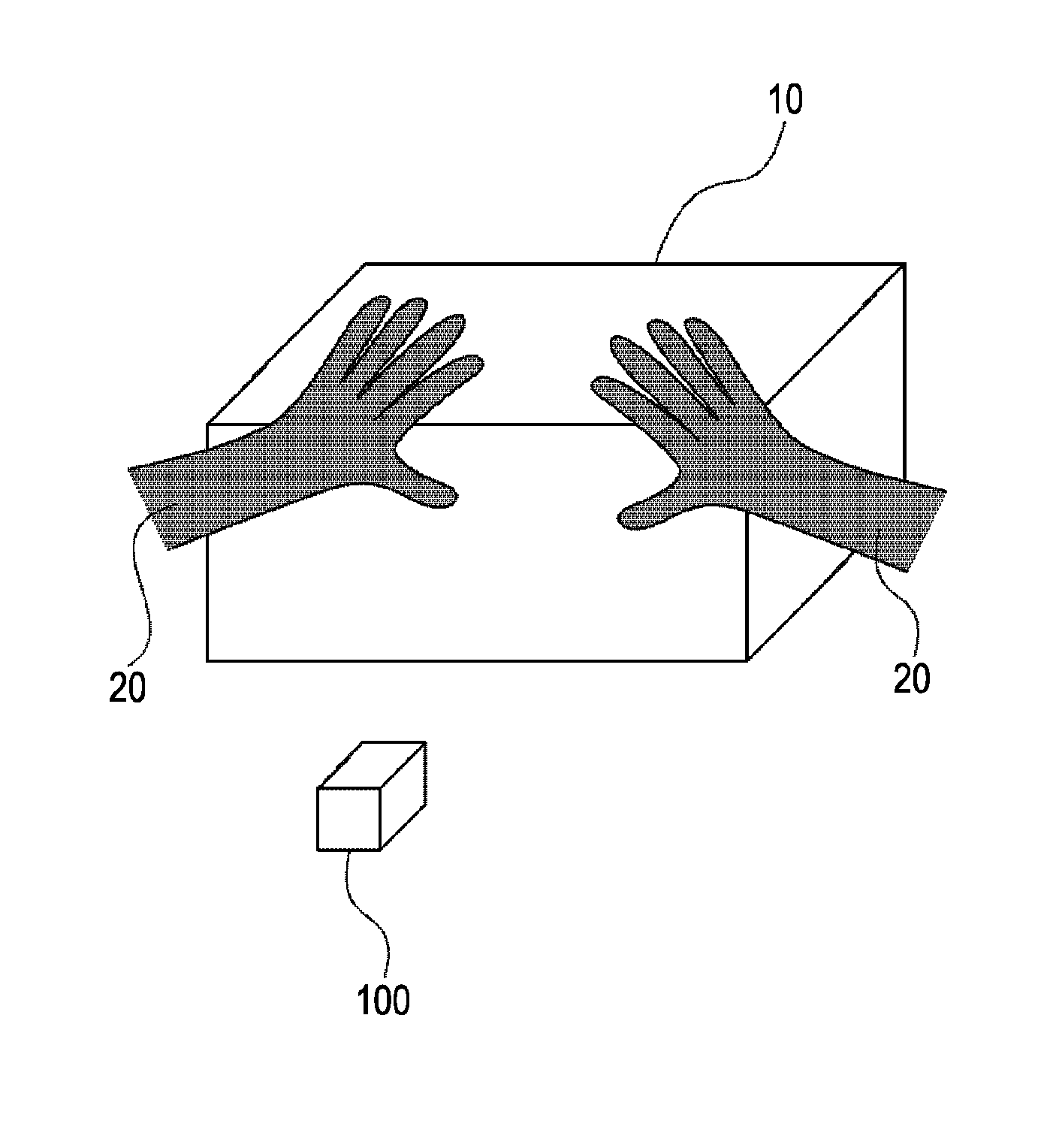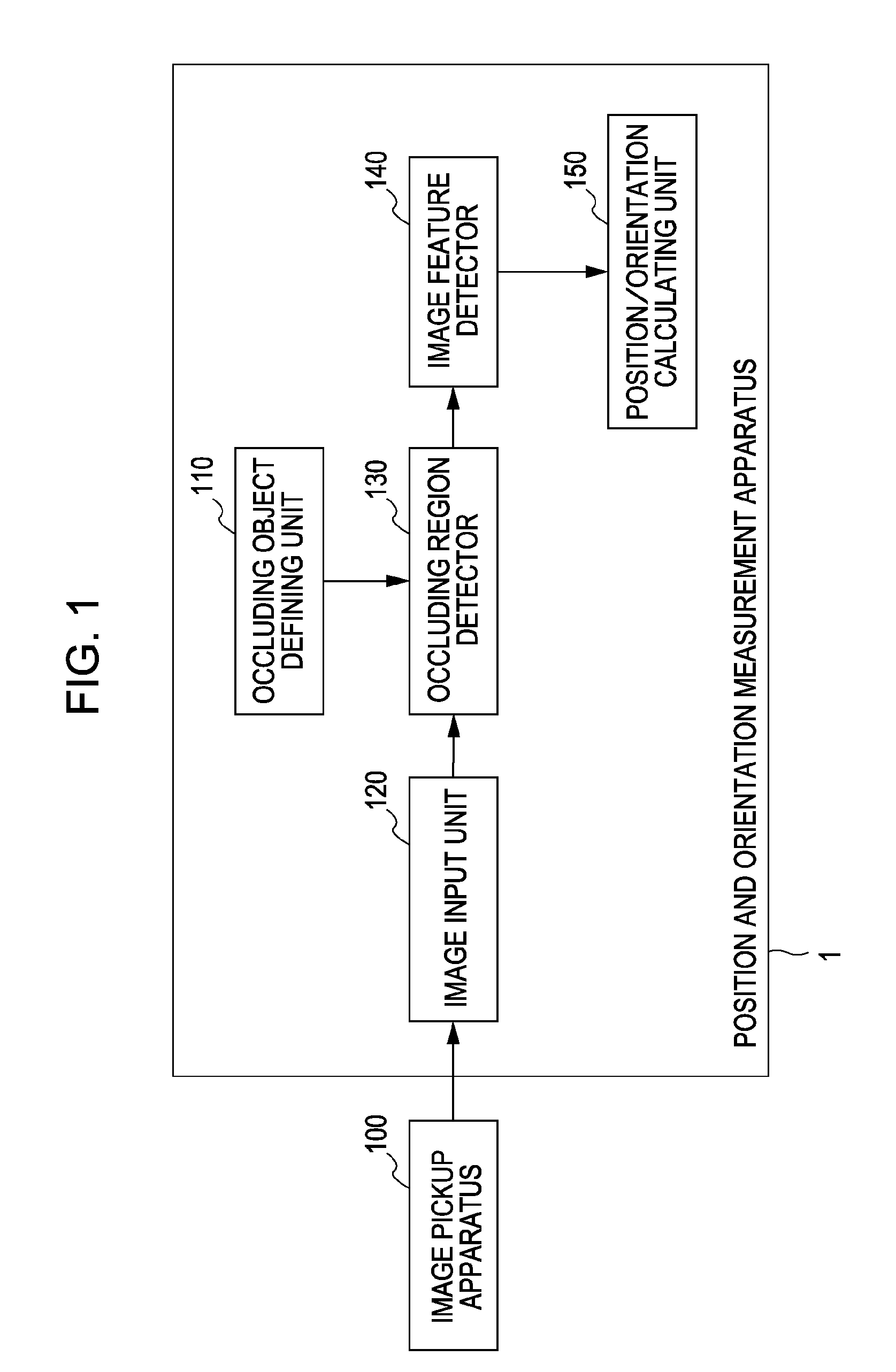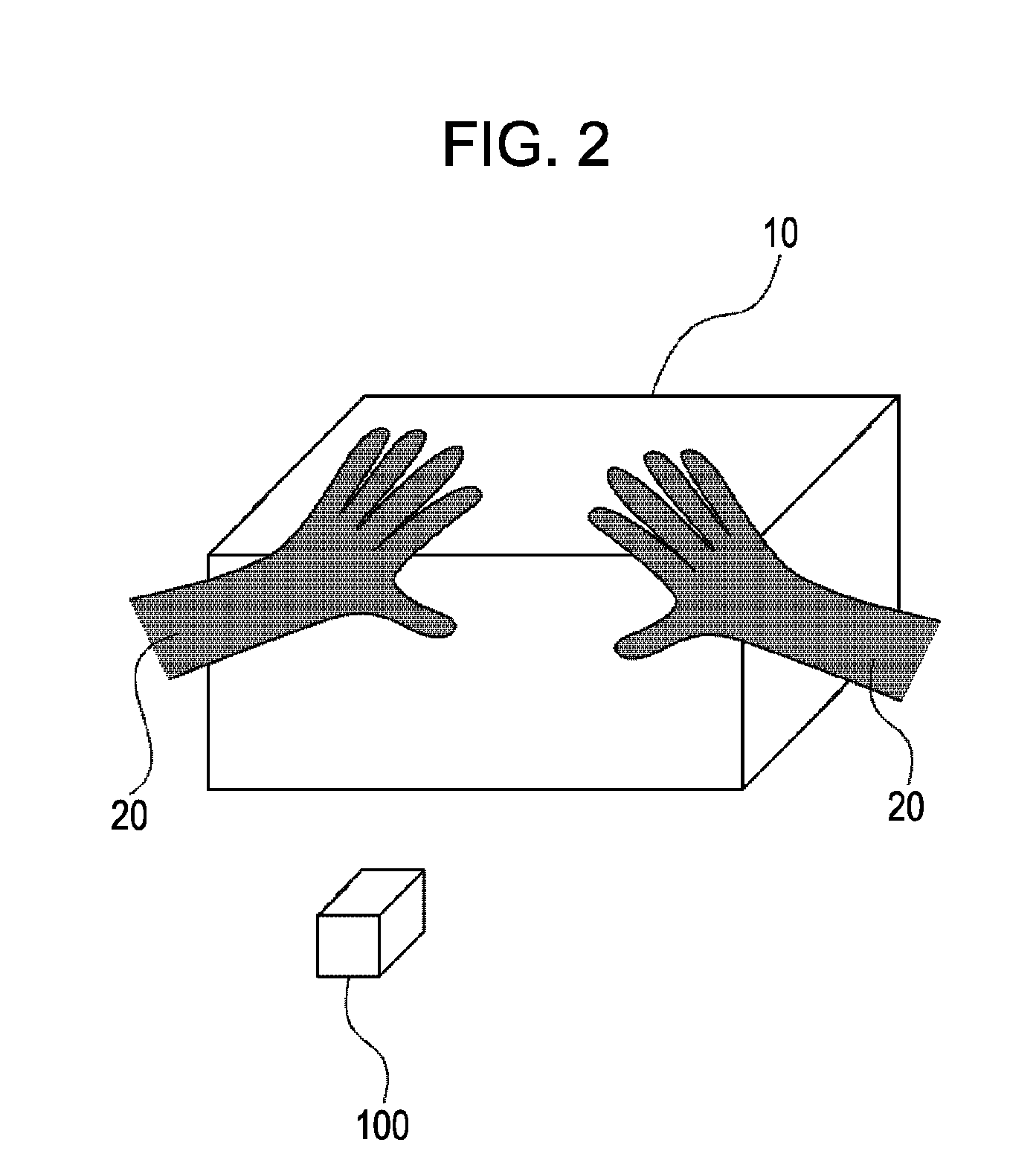Image processing apparatus and method
a technology of image processing and image features, applied in the field of image processing apparatus and method, can solve the problems of unnatural, in-front/back relationship between real and virtual spaces, observer viewing the resulting image feels unnatural, etc., and achieve the effect of improving registration stability and preventing erroneous detection of image features
- Summary
- Abstract
- Description
- Claims
- Application Information
AI Technical Summary
Benefits of technology
Problems solved by technology
Method used
Image
Examples
first embodiment
[0057]A first embodiment of the present invention will be described with respect to a registration method using edges detected on an image. More specifically, a position and orientation measurement apparatus and a position and orientation measurement method for determining the position and orientation of an observer relative to an observation target object observed by the observer when the observation target is occluded by a hand of the observer will be described.
[0058]FIG. 1 shows an example structure of a position and orientation measurement apparatus 1 according to the first embodiment. As shown in FIG. 1, the position and orientation measurement apparatus 1 includes an occluding object defining unit 110, an image input unit 120, an occluding region detector 130, an image feature detector 140, and a position / orientation calculating unit 150. An image pickup apparatus 100 is connected to the image input unit 120.
[0059]FIG. 2 is a diagram showing a typical situation where the posit...
modification example of first embodiment
[0114]In the first embodiment, an object occluding an observation target object is a hand but is not limited thereto, and may be any other object having features on a two-dimensional image, such as a face.
[0115]For example, as shown in FIG. 12, a database of face images is determined in advance, and a captured image is matched with the face images in the database. It is determined that a region of the image matched with the face images is occluded by a face, and no image features are detected in that region. With this method, stable high-accuracy position and orientation calculation can be achieved.
[0116]In the first embodiment, an occluding region is detected on the basis of the color of a hand. If an occluding object has a unique color, an occluding region may be detected on the basis of the unique color. For example, when a user wears orange-colored gloves on his / her hands, an orange-colored region in a captured image may be detected as an occluding region.
[0117]Alternatively, an...
second embodiment
[0118]In the first embodiment, a hand region is detected on a captured image and is designated as an occluding region. No image features are detected in the occluding region, thereby achieving stable high-accuracy calculation of the position and orientation of an observer relative to an observation target object.
[0119]In a second embodiment of the present invention, an occluding region is not detected using features on a two-dimensional image in the manner described in the first embodiment, but is detected from a captured image using a model of an occluding object and the rough position and orientation of the occluding object and an image pickup apparatus.
[0120]FIG. 13 shows an example structure of a position and orientation measurement apparatus 2 according to the second embodiment. As shown in FIG. 13, an image pickup apparatus 100 is connected to the position and orientation measurement apparatus 2. The position and orientation measurement apparatus 2 includes an occluding object...
PUM
 Login to View More
Login to View More Abstract
Description
Claims
Application Information
 Login to View More
Login to View More - R&D
- Intellectual Property
- Life Sciences
- Materials
- Tech Scout
- Unparalleled Data Quality
- Higher Quality Content
- 60% Fewer Hallucinations
Browse by: Latest US Patents, China's latest patents, Technical Efficacy Thesaurus, Application Domain, Technology Topic, Popular Technical Reports.
© 2025 PatSnap. All rights reserved.Legal|Privacy policy|Modern Slavery Act Transparency Statement|Sitemap|About US| Contact US: help@patsnap.com



